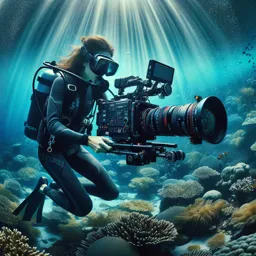Cinematography is the language of visual storytelling. Understanding how to frame shots, choose camera angles, and use movement effectively allows filmmakers to convey meaning, emotion, and atmosphere. This article explores the foundational elements of cinematography, empowering creators at any level to elevate their work with purposeful visuals.
Introduction
Cinematography is more than operating a camera—it’s the craft of telling a story through visuals. A well-composed shot can express emotion, build tension, or reveal character without a single word. For filmmakers, mastering the basics of framing, angles, and movement is the first step toward creating captivating, cinematic narratives.
The Power of Framing
Framing controls what the viewer sees and how they feel about it. Thoughtful composition can guide attention, reveal relationships, and enhance storytelling. Key shot types include:
- Wide Shot (WS): Establishes setting and spatial relationships.
- Medium Shot (MS): Shows subjects from the waist up, ideal for conversations.
- Close-Up (CU): Highlights emotion or key details by focusing tightly on the subject.
Use the rule of thirds, balance, and negative space to create more compelling and deliberate images. Framing isn’t just technical—it’s psychological.
Choosing Camera Angles
Angles shape the audience’s perception of power, vulnerability, or realism:
- High Angle: Looks down—makes characters appear weak or overwhelmed.
- Low Angle: Looks up—emphasizes strength, authority, or menace.
- Eye Level: Feels neutral and relatable.
- Dutch Angle: Tilted to create disorientation or tension.
Strategic use of angles helps communicate subtext and mood without needing dialogue.
Camera Movement
Camera motion adds rhythm, emotion, and depth to a scene. Common types include:
- Pan: Sweeps left or right from a stationary position to follow action or reveal space.
- Tilt: Moves vertically to expose something above or below.
- Tracking/Dolly Shot: Moves with the subject to add immersion or energy.
- Handheld: Intentionally unsteady, creating intimacy or urgency.
Movement should always be intentional—every shift in perspective should support the story, not distract from it.
Putting It All Together
Great cinematography blends technique with intuition. Experimenting with framing, angles, and movement lets you discover your visual style and voice. Whether you’re working with a smartphone or high-end gear, the core principles remain the same.
Remember: cinematography is not just about capturing images—it’s about how those images speak to your audience.





















